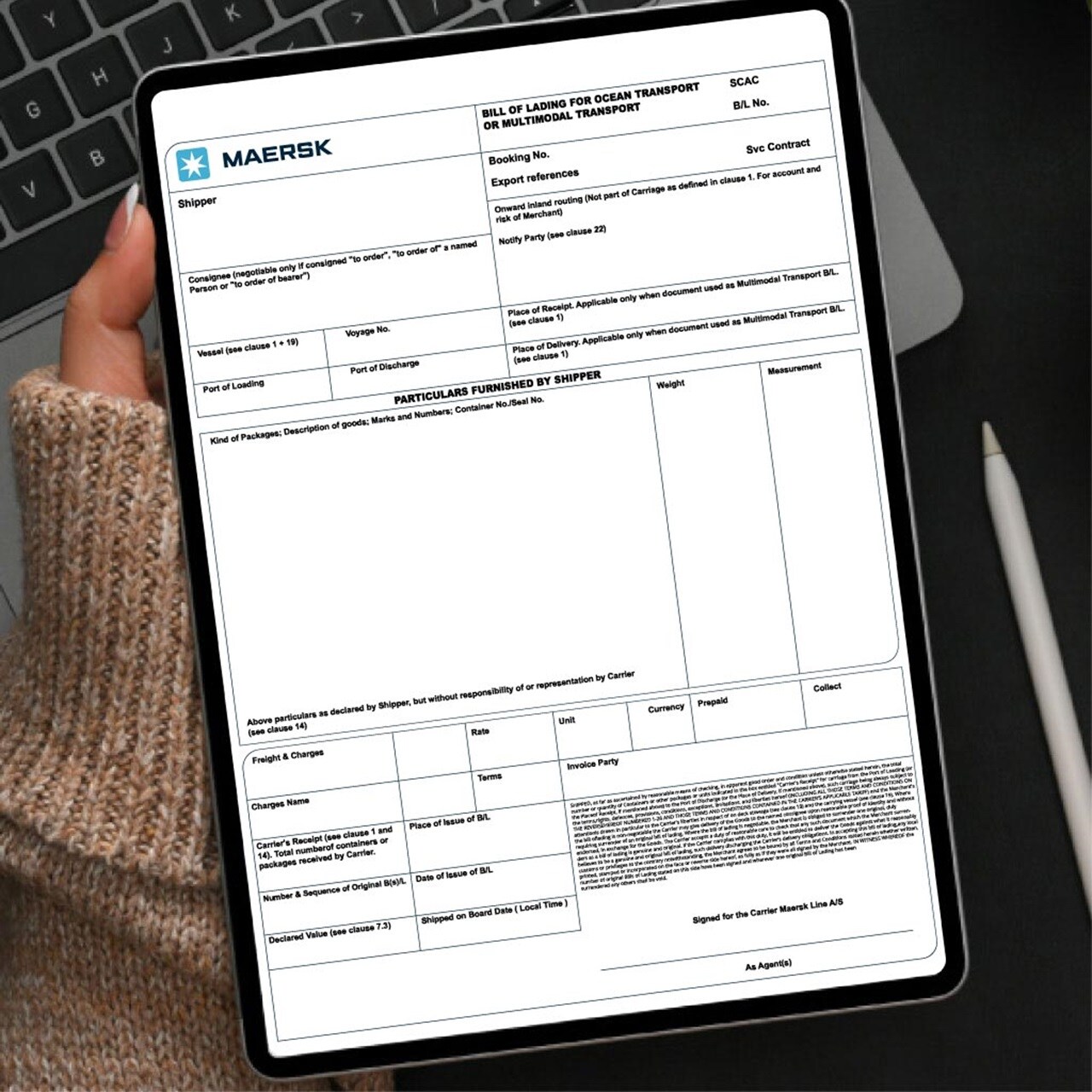The bill of lading is one of the most important shipping documents you’ll encounter as you begin to move your cargo around the world. In this article we explain what it is and why it’s the key to unlocking international logistics.
Before we get into it, let’s quickly go over the key players involved:
- The shipper is the party supplying the goods being transported. They are responsible for packing and preparing the shipment for transportation. This might be your supplier, or your own warehouse/manufacturer.
- The carrier is the party that moves the cargo. For example, this could be Maersk, or any other shipping line, haulage company or airline that carries your cargo.
- The consignee is the party designated to receive the shipment. This could be your company, or a manufacturer who uses parts you’re shipping.
What is a bill of lading in shipping?
A bill of lading is a legal document that is issued by a carrier to the shipper. It contains details about which goods are being shipped, where the shipment is coming from and going to, as well as details of the shipper, carrier, and consignee.
The bill of lading has three main functions:
- Evidence of a contract of carriage
- Receipt of goods i.e. an acknowledgement that the carrier has received the freight
- Document of legal title to goods

What information is in the bill of lading?
The bill of lading contains details about the type and quantity of goods, the parties involved in the shipment, and the terms of the shipment.
After a booking is placed with a carrier, the shipper needs to submit Shipping Instructions with accurate information about the shipment, which the carrier uses to create a bill of lading.
The bill of lading includes, for example:
- Party details — shipper, consignee and/or notify party
- Cargo description
- Cargo weight, package count, and volume
- Terms of payment
- Port of loading
- Port of discharge
- Bill type
When is a bill of lading issued?
The bill of lading is only issued after the vessel has departed from the port of loading.
Why is the bill of lading important?
A bill of lading is important because it acts as the legal document of title which allows the person holding it to claim ownership of the cargo.
The bill of lading is also evidence of a carriage contract, which details the responsibilities of the carrier with the parties involved in the transportation of the cargo.
How many types of bills of lading are there – and when is a bill of lading required?
There are many different types of bills of lading, depending on where you are shipping to, what commodity you are shipping, and your needs. The type of bill of lading you encounter might be based on who issued it, the mode of transport, or the relationship between yourself and the shipper – for example, if you’ve paid for goods or transportation upfront or on credit.
Two types of bills of lading you’ll come across at Maersk include:
- Original bill of lading: The primary document used in sea transport. It functions as evidence of a contract of carriage, transport goods receipt, and a legal title to the goods. To receive the cargo, the buyer (consignee) will need to present the original bill of lading.
- Seaway Bill: The sea waybill is a type of bill of lading. It is a key document used in sea transport when the supplier (shipper) decides to release ownership of the cargo to the buyer (consignee) immediately. This means that the cargo can be picked up by the party identified in the waybill without presenting a document of ownership. A sea waybill is evidence of a contract of carriage and a transport goods receipt but does not give title to the goods.
What is a telex release?
It's worth a quick note here on something else you might encounter in your shipping — a telex release or electronic cargo release. The telex release is not a type of bill of lading, but a method of releasing a bill of lading electronically. A telex release is only relevant to shipments where an original bill of lading has been issued. It is a message that authorises the carrier to release the cargo to a named party at the destination, without the presence of the original bill of lading.
Summing up
So, the bill of lading is the key to unlocking international logistics. It’s the pass that gets you through the door, but it relies on having correct information provided and being correctly issued. Take your time getting to grips with the documentation before you book. You can read more about the bill of lading in our FAQs.
Feel ready to tackle your logistics? Why not sign up to Maersk today to explore the platform, browse routes and start booking.
Sign up to The Logistics Pulse newsletter
Receive our insights directly in your mailbox by signing up through this form and enter a world of truly integrated logistics. Get inspired by our selection of articles that help you navigate supply chains, understand industry trends, and shape your logistics strategy. You can unsubscribe anytime.
Thank you for signing up
An unexpected error occurred
Sorry but we were unable to sign you up for newsletters.












